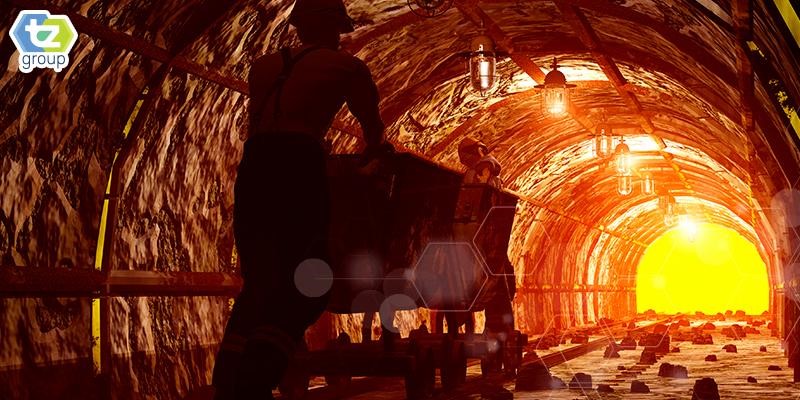Arsenic trioxide, a substance of significant industrial importance yet notable toxicity, holds a complex position within the mining sector. This comprehensive note delves deeper into the essence, origins, human and natural contributions to its presence, its nuanced role in mining, and the extensive measures in place to curtail arsenic pollution.
It serves as an essential primer for professionals navigating the challenges and responsibilities of arsenic trioxide utilization in industrial applications, particularly within the mining industry.
What is arsenic trioxide
Arsenic trioxide, represented chemically as As2O3, manifests as a white or transparent crystalline powder. This compound emerges either from the oxidation of arsenic or through the processing, or roasting, of arsenic-bearing mineral ores. Its dual nature as a critical industrial component and a toxic substance necessitates careful handling and application in various sectors.
Industrial Uses and Economic Significance
Beyond its notorious toxicity, arsenic trioxide is integral to the production of a wide array of products. These range from pesticides and insecticides, pivotal in agriculture, to the semiconductor industry, where it contributes to the manufacture of gallium arsenide, a key material for electronic devices.
The versatility of arsenic trioxide extends to glass production and the hardening of metal alloys, underscoring its economic importance despite its hazardous nature.
Natural sources
Earth’s Crust Composition
Arsenic is naturally present in the Earth’s crust, intertwined within a multitude of minerals and ores. This widespread presence is mirrored in its detection in water, air, and living organisms, stemming from both natural and anthropogenic sources.
Release through Natural Processes
Volcanic eruptions, erosion, and rock weathering serve as primary natural processes facilitating arsenic’s release into the environment. These mechanisms contribute to the natural cycling of arsenic, affecting its concentration in various ecosystems.
Human activities that intensify the release of arsenic
Industrial Emissions and Agriculture
The anthropogenic footprint on arsenic distribution is significant, with industrial emissions, the burning of fossil fuels, and the application of arsenic-based compounds in agriculture amplifying its environmental presence. These activities not only elevate arsenic levels in soil and water but also introduce long-term ecological and health challenges.
Mining and Metallurgical Processes
The extraction and processing of arsenic-bearing ores stand out as substantial human activities influencing arsenic release. Mining operations, particularly those targeting metals like gold and copper, often encounter arsenic as an impurity. The subsequent processing stages can lead to the release of arsenic into the environment if not adequately managed.
Arsenic Trioxide in the mining industry
Occurrence and Recovery
Mining industries frequently deal with ores containing arsenic, necessitating sophisticated recovery and management strategies to mitigate environmental impact. The extraction of arsenic trioxide from these ores is a delicate balance between economic gain and environmental stewardship.
Applications and Challenges
Arsenic trioxide is a byproduct of various metallurgical processes, particularly in the treatment of gold and copper ores. The challenge lies in balancing the economic benefits of arsenic production with environmental and health considerations.
How the mining industry prevents arsenic pollution
Pollution Control Technologies
To address the challenges posed by arsenic, the mining industry employs a suite of technologies aimed at capturing and neutralizing arsenic emissions. Techniques such as scrubbers, electrostatic precipitators, and specialized treatment processes play a critical role in converting arsenic into less harmful forms, ensuring its safe disposal or recycling.
Regulatory Compliance and Best Practices
The adherence to international, national, and local regulations is paramount in the mining industry’s efforts to manage arsenic pollution. These regulations guide the implementation of best practices, including the recycling of arsenic materials, environmental monitoring, and the development of technologies aimed at reducing arsenic’s impact.
Such practices ensure not only the safety of the workforce but also the protection of the surrounding ecosystems.
A Closer Look at Arsenic Management Strategies
Recycling and Reuse Initiatives
The push towards recycling arsenic-containing materials represents a vital strategy in minimizing environmental impact. By reclaiming arsenic from electronic scrap and other sources, the industry can reduce the demand for primary arsenic production, thus decreasing the potential for pollution.
Community and Environmental Health
The mining industry’s responsibility extends beyond regulatory compliance to ensuring the health and safety of communities surrounding mining operations. This involves continuous monitoring of air and water quality, public health initiatives, and engagement with local communities to address concerns related to arsenic exposure.
Future Directions and Innovations
Emerging technologies and ongoing research promise to further enhance the mining industry’s ability to manage arsenic. Innovations in bioremediation, nanotechnology, and advanced filtration systems are being explored as potential solutions to arsenic contamination, underscoring the industry’s commitment to environmental stewardship and sustainable practices.
Working towards a sustainable future with TZ Group
The role of arsenic trioxide in the mining industry embodies the dual challenge of leveraging its industrial applications while mitigating its environmental and health impacts.
Understanding the complexities surrounding arsenic trioxide is crucial for professionals involved in mining, environmental management, and related sectors. It highlights the importance of stringent safety protocols, innovative technologies, and responsible practices in navigating the challenges posed by this critical mineral.
For industries seeking arsenic trioxide or other industrial chemicals, TZ Group stands as a beacon of reliability and responsibility. We are committed to supplying it in compliance with the highest safety and environmental standards. Our approach ensures competitive pricing, timely deliveries, and adherence to regulatory requirements, making us the partner of choice for your industrial needs.
Embark on your next project with TZ Group, where our dedication to best practices, quality standards, and environmental stewardship paves the way for success. Contact TZ Group today to explore how we can support your industrial chemical needs, ensuring a future where economic growth and environmental sustainability go hand in hand.


